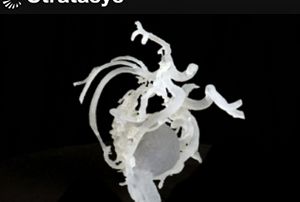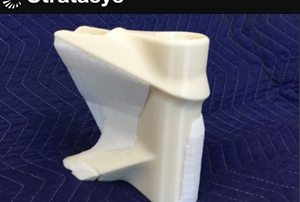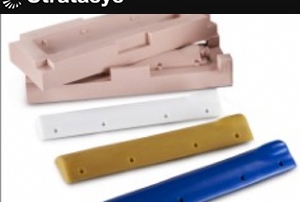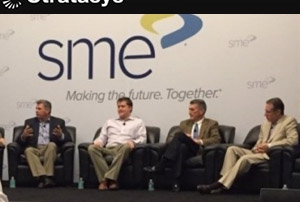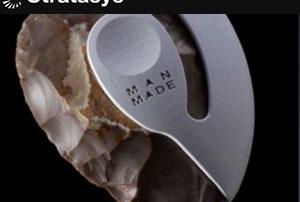25 Years and Still Counting…Thank you!
25 Years.....where did the time go? Getting really excited for our big Open House on Oct 14th from noon to 6pm! We are hoping to see a lot of our long term customers as well as our new customers that we have had the pleasure to partner with over the years. The event is going to offer 16 different seminars in four different seminar rooms. If you haven't had the opportunity to see the NorthEast's largest 3D Printer Showroom in action this event will be a great opportunity. Some of our customers will be showcasing their products that have been designed and manufactured with the help of our products and support. Let us know if you want to participate in the customer showcase. With hundreds of customers, vendors, employees already registered this very well could be the industry networking event of the year! We hope to see as many of you join us to reflect on 25 years of partnerships as well as discuss the new age of technology heading our way. You can register on-line at http://info.cimquest-inc.com/25th-anniversary-nj Hope to see you all soon!
Surgeons 3D Print Models of Children’s Brains
Reprint from 3dprint.com While most of us have either been the patient undergoing a surgical procedure or a loved one waiting and worrying, few of us have had to be on the other side as the trained surgeon, who often bears the responsibility of performing numerous delicate procedures with lives in his hands on a daily basis. Many of us are thrilled to hear about the innovations 3D printing offers to the medical world as people are saved with progressive implants and devices and quality of life is improved. 3D models are becoming more and more common not only for educating the patient on what is happening, but also for guiding surgeons in diagnosis as well as in treatment and the surgical process. Certain procedures may be completely new for a surgeon and while the 3D model is what he uses to study and practice on, it is probably the same 3D printed model that goes into the operating room with him and potentially shaves hours off the procedure, as well as plenty of stress. Vein of Galen malformation displayed in 3D model [Credit: Boston Children’s Hospital] Recently, at Boston Children’s Hospital, surgeons were looking toward several tricky pediatric procedures. Thanks to [...]
How To Finish a 3D Printed Part To Look Like a Production Part
By Jason Matses on July 31, 2015 Finishing and painting 3D printed parts is easy and can be done following these few steps. Painting and finishing can transform your 3D prints into highly aesthetic parts, giving them appearance of production parts. Prototypes, concept models, and end-use parts can all be finished to presentation-quality in the matter of hours. The four main steps we will cover here are: Preparation, Sanding, Priming, and Painting. 3D printed bike part with support material. This part was printed in ABS-M30 plastic at 0.010” Layer resolution on a Fortus 250mc printer. It is fresh off the printer so it still has support material on it (which is white). Prepare Remove support material, either by hand or dissolve it away if necessary. Rinse part thoroughly in warm water. Cleaned part, all support material removed. Sand Sand the areas of the part that will be painted. Start with a rough grit like 150 or 220 grit sandpaper. Once most of the layer lines have been smoothed out move to a 300 to 400 grit sandpaper. Keep in mind starting off with a part printed at 0.007” or 0.005” layer resolution will be a smoother part requiring less [...]
3D Printed Patterns Reduce Costs and Improve Production Agility
Learn how to reduce costs and improve production agility for silicone molds with 3D printed pattern. Silicone molding is a manufacturing process for parts used in prototyping, functional testing and short-run production. Obtaining good results out of the mold requires the use of strong, accurate mold patterns. These patterns are typically machined from metal or wood, but the process is usually time-consuming and expensive. An FDM 3D printed pattern (white) used to make a silicone mold and resulting parts for an MRI coil cover. Stratasys’ FDM-based (Fused Deposition Modelling) additive manufacturing solutions offer a better and more agile alternative for producing patterns for silicone molding. FDM 3D printed patterns are strong and won’t distort under molding pressure or break when they’re removed from the mold. They’re dimensionally stable too and can be used to produce numerous molds with accuracy. The best part of the story, however, is that FDM 3D printed patterns are usually significantly less expensive. Contact us today to learn more about 3D printing.
Executives At Stratasys Learn About Additive Manufacturing in Key Industries
SME’s The Big M Conference returned to America’s manufacturing hub - Detroit, Michigan - for a two-day event illustrating the future of manufacturing. The conference gave industry leaders the opportunity to explore emerging technologies and innovations that are needed to create better solutions for businesses. Stratasys networking breakfast attendees experienced the design advantages and durability of 3D printed parts. Stratasys kicked off its participation with a networking breakfast, welcoming more than 20 high-level executives from different manufacturing companies for a discussion on the significance of additive manufacturing integration in today’s industrial segments. Attendees included some of the industry’s biggest players: plastic fabrication manufacturer, Midwest Rubber Company; induction heating and melting equipment manufacturer, Ajax TOCCO; and automotive and defense manufacturer, Precision Global Systems. Stratasys Midwest territory manager and networking breakfast presenter, Paul Carlson, noted that growth of applications in aerospace, automotive, healthcare, and other industrial verticals could eventually support a +$40 billion market over the next 15-20 years. Joe Gibbs Racing design engineer, Brian Levy, also presented at the breakfast. As one of the leading NASCAR racing teams, Joe Gibbs Racing is no stranger to success both on and off the track. Levy‘s team, a Stratasys automotive customer, has been involved with [...]
Getting a Handle on Stone Age Tools with Stratasys 3D Printing
Stone-age hand-axes were a functional utility tool as well as prehistoric status symbol, demonstrating primeval man’s ability to adapt, innovate and use technology to improve his lifestyle and long-term existence. Among the stone-age community dating back to the Paleolithic Period some 700,000 years ago, hand axes were a sign of success, extraordinary skill and man’s ability to provide for his family. ‘Stone hand-axe’ number 6: Bringing together technologies from the farthest ends of human tool-making. Photo credit: Moti Fishbain In celebration of this historical milestone, these stone-age tools have received a contemporary 3D printing upgrade. In a collection entitled ‘MAN MADE’, designers Dov Ganchrow and Ami Drach have recreated a series of nine stone-age tools, in collaboration with leading 3D printer manufacturer, Stratasys. ‘Stone hand-axe’ number 5; Custom, ergonomic axe handle 3D printed in Stratasys VeroGray material. Photo credit: Moti Fishbain The MAN MADE series of hand-axes includes flint stones formed using the primeval method of knapping – the art of striking flint with another stone to create a new form. In the stone-age, this production technique was absolutely ‘cutting edge,’ requiring remarkable expertise and enabling primeval humans to learn life-changing new skills: the ability to cut meat, scrape [...]



